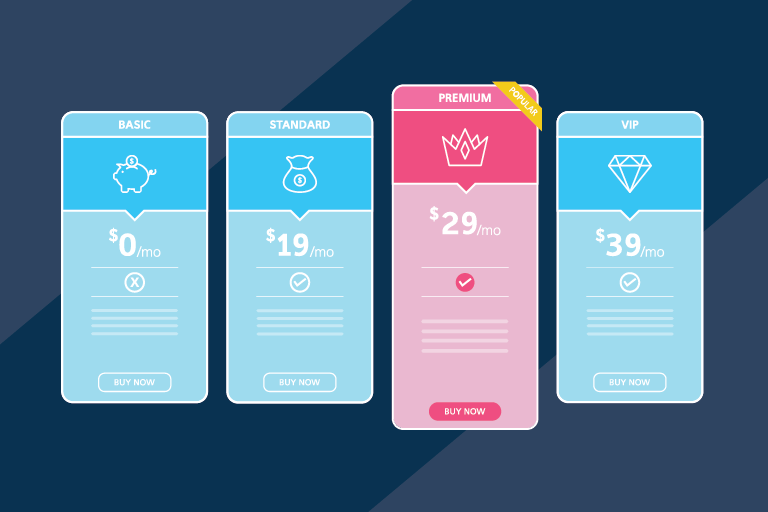In 2016, Apple shifted their focus to “heavily favor” subscription apps versus in-app or one-time purchases. With subscription apps, rather than paying as they go, customers can make a monthly or annual payment to access all of an app’s content. Subscription apps may also be tiered meaning a certain subscription threshold gives access to certain content while a higher price may provide access to additional, “exclusive” content.
Today, subscription apps are proving to be quite profitable. In 2020, according to TechCrunch, “…global subscription app revenue from the top 100 subscription apps (excluding games), climbed 34% year-over-year to $13 billion, up from $9.7 billion in 2019.” Why are subscription apps taking off and how can you ensure your subscription app is successful? What are the key ingredients needed to create a good customer experience that delivers on expectations after charging a monthly or annual fee? Let’s get into it.
Why Subscription Apps Work
While in-app and one-time app purchases may focus on new user acquisition, subscription apps are tied more closely to retention. Rather than introducing new features or content as a user experiences your app, the user is presented with all of the content (or, whatever is available in their subscription tier) after their monthly payment.
Say a user made an in-app purchase then realized they weren’t interested in the content. That’s where their journey ends. They spent the $4.99, or whatever you may charge in-app, and then uninstalled your app. With a subscription however, if a customer pays a $4.99 subscription, they now have access to your content for the next month. Why would they uninstall your app if they’ve already paid?
Take Netflix, for example. Users pay a monthly subscription fee and are given access to all of the content on Netflix. If the service was free but some shows or movies required a payment, it could deter users from watching that premium content or, worse, deter them from using the service altogether. With Netflix’s subscription, there aren’t any surprises. It’s a set fee that reoccurs every month—simple, straightforward, and retains customers. But, it’s not always so easy to create a successful subscription app.
Challenges of Subscription Apps
Subscription apps can pose some challenges for brands. Why? No one said customer retention is easy. Once you have the customers as subscribers, the challenge is keeping them engaged and continuing to renew their subscription. With in-app or one-time purchases, you can throw all the bells and whistles at a customer to get them to make a single purchase. With subscription apps you need to be innovating and adding features to keep customers from canceling.
Not only are you constantly tasked with meeting (or exceeding) customer expectations, you’re also battling subscriber burn-out. As YouAppi puts it, “Customers who frequently sign up for these types of apps may be tired of paying for subscriptions or simply might need to downsize their monthly expenses.” You don’t want to be another monthly charge on a long list of other subscriptions.
And, lastly, churn doesn’t disappear when you have a subscription app. Yes, it may take a bit longer, depending on your renewal cycle, but it’s still very present. If a customer pays a monthly fee and isn’t getting what they need from your subscription, they can cancel. They may still have access to your content until their subscription ends and then, that’s it. Once their month ends, they’ll uninstall your app just like they would one that has in-app or one-time purchases. So what can you do to ensure subscription app success?
How to Overcome the Challenges
When you go to an ice cream shop and are looking at all the flavors, but you’re not sure which to get, what do you do? Ask for a sample. If the sample is good enough, you’ll get a whole cone-full. Think of that initial thimble of ice cream as a subscription trial.
We’ve all signed up for a “two-week trial” at some point. We get access to some of what the app has to offer—a.k.a. “freemium”— and then, at the end of two weeks, we’re charged and get access to more content. Trials are an effective way to give customers a preview of your subscription app so convince them to become a subscriber. However, during those two weeks, you need to be sure your app clearly demonstrates subscriber benefits.
With a freemium subscription, you should also aim to provide a detailed onboarding experience. Demonstrate how to use the app and show the customer all of the features they could get with a paid subscription and why those features are beneficial. Tread lightly. The trial period is highly sensitive—any frustration or friction during the onboarding process could immediately convince the customer to cancel.
Lastly, use marketing channels to educate and engage the customer. With an app you have access to mobile marketing channels like in-app messaging, mobile inboxes, and push notifications. Each of these channels, plus non-mobile like email or direct mail, can be used to create a harmonized experience that keeps the customer engaged. For example, maybe during onboarding you send a series of push notifications that highlight various features of the app.
Deliver Value to Build Relationships
Subscription apps have the potential to increase customer lifetime value (LTV). By collecting a monthly fee, you’ll be able to better predict overall revenue but also better understand your customers and what they need from your app to stay subscribed.
Don’t ignore the data you can collect just because a customer has signed up for a month, a year, or a quarter. Every interaction a customer has with your app is an opportunity to learn more about how you can deliver value that meets their needs. Keep subscribers happy by using their data to create tailored, in-app experiences.
To learn more about improving your customers’ mobile experiences, schedule an Iterable demo today.































